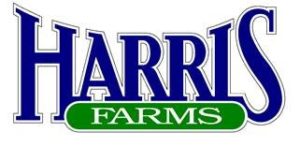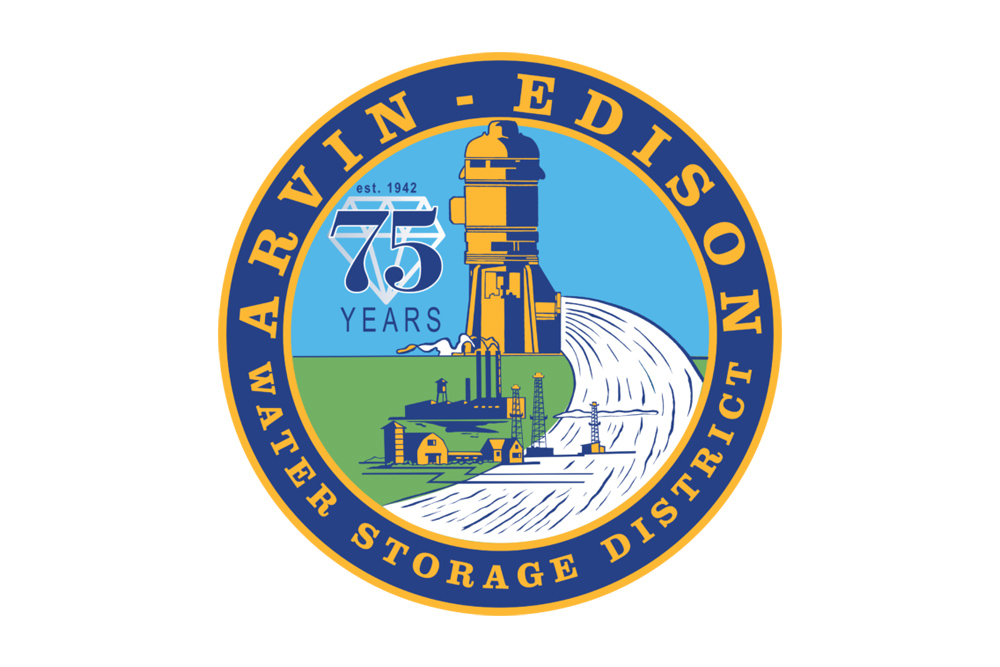 The Exchange Contractors board of directors met on Friday, January 8, 2021 remotely on GoToMeeting from its Los Banos headquarters. Chairman James O’Banion called the meeting to order at 9am sharp. Executive Director Chris White introduced folks and things ramped up in a hurry and that’s one reason this report didn’t have a longer introduction. There were no changes to the agenda, the minutes were approved without comment and no one from the public shared any opinions or announcements.
The Exchange Contractors board of directors met on Friday, January 8, 2021 remotely on GoToMeeting from its Los Banos headquarters. Chairman James O’Banion called the meeting to order at 9am sharp. Executive Director Chris White introduced folks and things ramped up in a hurry and that’s one reason this report didn’t have a longer introduction. There were no changes to the agenda, the minutes were approved without comment and no one from the public shared any opinions or announcements.
Finances
JoAnn White gave the board a rundown of what bills the board owes and the board agreed to pay them. The finance committee report was adopted and Chris White explained to the board it has to annually adopt a statement of investment policy and guidelines by resolution. It is unchanged from last year so the board passed the resolution.
Next White laid out the contributions Ex Con were considering. The list included FFA, the Farm Bureau and the charity fishing trip at O’Neil’s Forebay. The board approved. Good for them.
Water Report
Adam Hoffman gave the Water Master report saying San Joaquin River releases are declining for the time being, if I understood him correctly. He reported pumping from the Delta is flat as is Millerton Lake inflow. Pine Flat Reservoir inflow is slightly up but  conditions are dry. The only bright side to the dry conditions, Hoffman said, is the areas impacted by the Creek Fire – which burned a huge swath of SJR watershed hasn’t eroded.
conditions are dry. The only bright side to the dry conditions, Hoffman said, is the areas impacted by the Creek Fire – which burned a huge swath of SJR watershed hasn’t eroded.
Ex Con’s Delta sources depend on Lake Shasta inflows to a great degree and those inflows are at 50 percent of average right now. Hoffman said there could be an increase in pumping on the federal side next week and a decrease on the state side due to the Cooperative Operating Agreement. There are no storms predicted for the next couple of weeks but it is still early in the year. Director Mike Stearns asked about Delta inflow and outflow, the totals were off by 2,000 a/f and that was accounted for by consumptive use. Hoffman said this time of year there usually isn’t a positive consumptive use in the Delta.
Executive Directors Report
White gave an update on the San Joaquin River Restoration saying the US Bureau of  Reclamation is building a scale model of the fish bypass, I believe the one planned for the Chowchilla Bypass. That’ll be fun to play with. The Bureau has also submitted drawings on a “nature like” fish way if I understood, for the Sack Dam.
Reclamation is building a scale model of the fish bypass, I believe the one planned for the Chowchilla Bypass. That’ll be fun to play with. The Bureau has also submitted drawings on a “nature like” fish way if I understood, for the Sack Dam.
The Del Puerto Dam project has qualified for $1.5 million funding from the 2021 appropriations WIIN Act funding, good for it. White said hydrogeologist Dr. Ken Schmidt is working with the Triangle T folks on subsidence matters. The Bureau has completed gathering subsidence measurements and is putting that data together to share with the interested parties. The Triangle T Ranch used to be grazing land but has been converted to mostly almonds. There isn’t a permanent surface water supply and the pumping needed to support the orchards resulted in some substantial subsidence occurring pretty quickly.
White said there will be some closed session discussions on the Del Puerto Dam CEQA matters.
Policy Report
Director of Policy Steve Chedester gave his report on matters impacting Ex Con’s policies saying the Bureau’s scheduling has caused a delay of several months on the fish bypass.  Conversely there is progress on the Orestimba Creek project and impacted landowners are cooperative. Permitting is taking a while but that’s the norm.
Conversely there is progress on the Orestimba Creek project and impacted landowners are cooperative. Permitting is taking a while but that’s the norm.
Provost & Pritchard Engineering is writing a report on the Los Banos Creek project that will set things up for a CEQA permitting process to begin. Ex Con is working with the fine people at San Luis Water District on this project. That was all Chedester has to say and there were no questions.
Ex Con has some of the best water rights in the Valley and probably the state, but it’s also be around long enough to realize it needs to be proactive in securing as much surface water as possible.
Water Transfer
O’Banion left the room briefly and Chris Cardella took the gavel for the item dealing with a water transfer between Ex Con and the Santa Clara Valley Water District. In a non-critical year a 5,000 a/f transfer would take place and SCVWD would pay it back at a premium. In most cases a banking transfer pays back half of what was deposited, the banker receives two for one. I put two gallons in your transfer and get one gallon back. Also, and probalby because federal water is at issue here, there is a NEPA permit needed.
For example if Ex Con transfers 5,000 a/f this year and the next year is critical SCVWD would transfer 4,000 a/f back to Ex Con. In this case Ex Con would get four a/f back for every five a/f transferred. It’s a much better deal than the usual. SCVWD would pay for all the costs of the 5,000 a/f and so Ex Con would save all of that money. If the next year is non-critical SCVWD would pay Ex Con for the water.
Attorney Paul Minasian said there was a provision for Bureau uncertainty and asked White to elaborate. White said the original idea was to get the environmental work done as quick as possible but it now looks like there may be more time for the return.
Columbia Canal District General Manager Randy Houk asked if there is a scenario where Ex Con and SCVWD could end up in a dispute over the water designation of critical or non-critical. Minasian said since both entities are members of the San Luis Delta Mendota Division of the Central Valley Project that would not happen.
Sacramento Stuff
Consultant David Cory reported on the plethora of regulations. The Regional Board is requiring landowners with domestic wells must have them tested for nitrate. This is a new program for 2021 and not being administered by the Coalition. O’Banion asked if a well is being used for livestock will it have to be tested. Cory said no, only water for human  consumption and he said this is not a part of CV Salts. This program came from the State Board and the Irrigated Lands Program. He said the Regional Board wasn’t that happy about the State Board implementing. Someone asked if the water is only used for showering would the well have to be tested. Cory said in so many words, and I paraphrase former Secretary of State and Senator John Kerry, “You bet it might.” It’s the gov and not everything is clear.
consumption and he said this is not a part of CV Salts. This program came from the State Board and the Irrigated Lands Program. He said the Regional Board wasn’t that happy about the State Board implementing. Someone asked if the water is only used for showering would the well have to be tested. Cory said in so many words, and I paraphrase former Secretary of State and Senator John Kerry, “You bet it might.” It’s the gov and not everything is clear.
Cory said there’s a formula for determining how much estimated nitrate leaching is taking place in groundwater on the township scale. I understand this formula is not a one size fits all and it sounded like SGMA – once the amount of nitrates allowed are determined the solution will be shoehorned in. The fly in the ointment with this is who determines the acceptable levels and the solution? If an early action plan and long-term solutions can be developed and once approved, the state would allow the discharge of nitrates above the standard if alternate drinking water supplies are provided to those impacted by the discharges.
Lobbying
White gave a legislative update saying having California Secretary of State Alex Padilla  replacing Kamal Harris as federal Senator has taken place. California Attorney General Xavier Becerra has been picked for the new Harris/Biden administration and he’s gone. I don’t who has replaced him. The report White received was written before the unrest that took place in Washington DC earlier this week. So that wasn’t mentioned.
replacing Kamal Harris as federal Senator has taken place. California Attorney General Xavier Becerra has been picked for the new Harris/Biden administration and he’s gone. I don’t who has replaced him. The report White received was written before the unrest that took place in Washington DC earlier this week. So that wasn’t mentioned.
Attorney’s Report
Minasian said there wasn’t much to talk about in open session. He said the biological opinions for the Delta are still in contention. Sometimes I wish Minasian’s reports were longer. He always has interesting things to say. His perspective is often unique and he usually explains things in a way a layman like myself can understand.
Managers’ Reports
Jarred Martin, GM Central California Irrigation District reported the dry conditions have  been helpful in treated canals for weed control.
been helpful in treated canals for weed control.
John Wiersma, GM San Luis Canal Company reported good deliveries earlier in December. The organization was able to take some time off between Christmas and New Years. Wiersma said that was a well deserved rest for his employees.
Houk said the weather has allowed his crews to get the system in great shape for the new year.
Jeff Bryant, GM Firebaugh Canal Water District reported things are on track for all maintenance projects. However, the new canal linings are behind schedule by about two weeks. There are alternative conveyance so the farmers will be able to receive deliveries when the time comes. Bryant also reported the Grasslands JPA is up and running under Palmer McCoy’s management.
There was no informational report and the meeting then went into closed session and that was that.
DISCLAIMER OF RESPONSIBILITY; Waterwrights.net strives to provide its clients with the most complete, up-to-date, and accurate information available. Nevertheless, Waterwrights.net does not serve as a guarantor of the accuracy or completeness of the information provided, and specifically disclaims any and all responsibility for information that is not accurate, up-to-date, or complete. Waterwrights.net’s clients therefore rely on the accuracy, completeness and timeliness of information from DAW entirely at their own risk. The opinions expressed in this report are those of the author and do not represent any advertisers or third parties.
ALL RIGHTS RESERVED. Copyright 2021 by WaterWrights.net/DAW
SAN JOAQUIN RIVER EXCHANGE CONTRACTORS WATER AUTHORITY
Main Office: 541 H Street, P.O. Box 2115 Los Banos, CA 93653 Office 209/827-8616 www.sjrecwa.net Email: contactus@sjrecwa.net
DWR SGMA Identifier #5-022.07
The Exchange Contractors cover almost a quarter of a million acres in Fresno, Madera, Merced and Stanislaus Counties.
Mission Statement
The Exchange Contractors Water Authority mission is to effectively protect the Exchange Contract and maximize local water supply, flexibility and redundancy in order to maintain local control over the members’ water supply.
Board
James O’Banion-Chair Central California Irrigation District, Chris Cardella-Vice Chair Columbia Canal Company, James L. Nickel-Treasurer San Luis Canal Company, Mike Stearns-Director Firebaugh Canal Water District
Staff
Chris White-Executive Director, Steve Chedester- Director Policies & Programs, Adam Hoffman-Water Resources Specialist, Joann White-Director Finance and Human Resources, Darlene O’Brien- Administrative Assistant, Paul Minasian-Attorney
History
From the Exchange Contractors’ website: www.sjrecwa.net The San Joaquin River Exchange Contractors hold some of the oldest water rights in the state, dating back to the late 1800s. The rights were established by Henry Miller of the legendary Miller and Lux cattle empire. In 1871, Henry Miller constructed canals to divert water from the San Joaquin and North Fork of the Kings Rivers for irrigation of his vast acreage. Today, several of the original Miller and Lux canals are operated by the Exchange Contractors.
Although Henry Miller’s canals served the irrigation needs of his estate in the western portion of Fresno, Madera, Merced, and Stanislaus counties, in order for more growth on the east side of the San Joaquin Valley to occur, more water was needed. In 1933, the United States Department of Interior undertook the Central Valley Project, a vast undertaking to build dams throughout the great Central Valley including the Sacramento, American and San Joaquin Rivers. When construction of the Friant Dam (north of Fresno) was under consideration, feasibility studies showed that irrigation development of the Friant Project between Chowchilla and Bakersfield depended upon water being diverted from the San Joaquin River at Friant Dam and brought to the east side of the valley, via the Friant-Kern Canal.
To accomplish this, the government asked the heirs of Miller and Lux to agree to “exchange” where they receive their pre-1914 appropriative and riparian water from the San Joaquin and Kings Rivers for guaranteed deliveries of “substitute” water from the Sacramento River by means of the Delta-Mendota Canal and other facilities of the United States. This agreement, known as the “Exchange Contract,” along with the accompanying “Purchase Contract,” were reached in 1939 and that led to the name “San Joaquin River Exchange Contractors.” In normal years, the Exchange Contractors are guaranteed 100% of their contractual water allotment (840,000 acre feet) and in critical years the amount is 75% (650,000 a/f).
The Exchange Contractors, however, did not abandon their San Joaquin River water rights. Instead, they agreed not to exercise those San Joaquin and Kings Rivers’ water rights if guaranteed water deliveries continued through the Delta-Mendota Canal or other facilities of the United States.
































